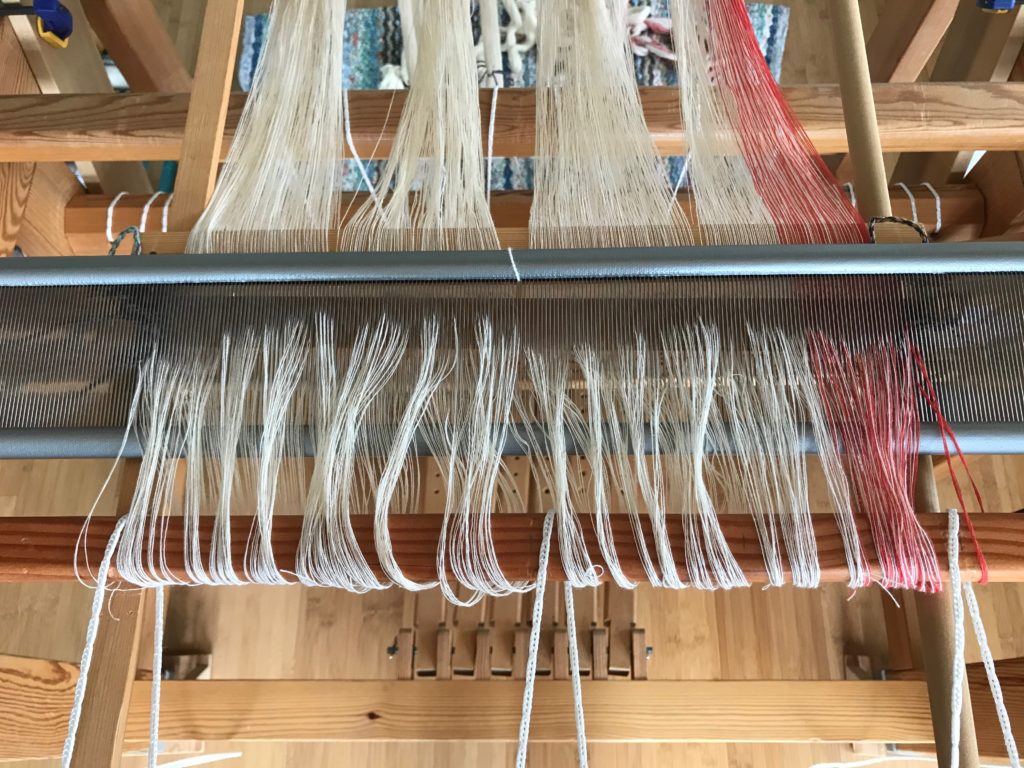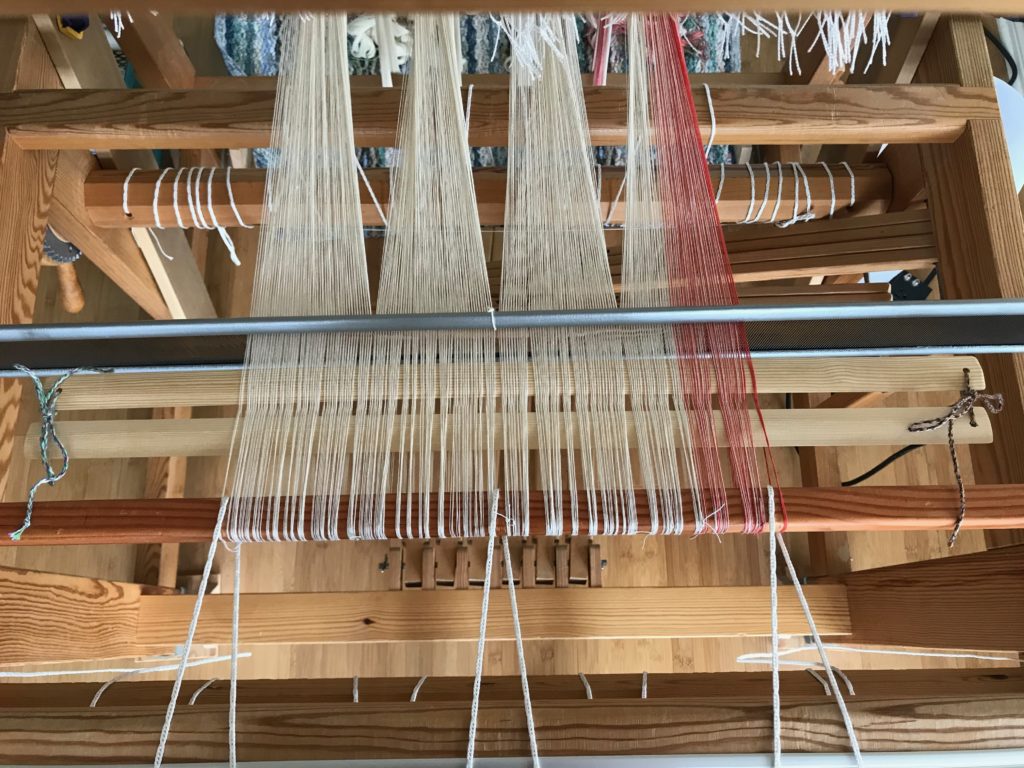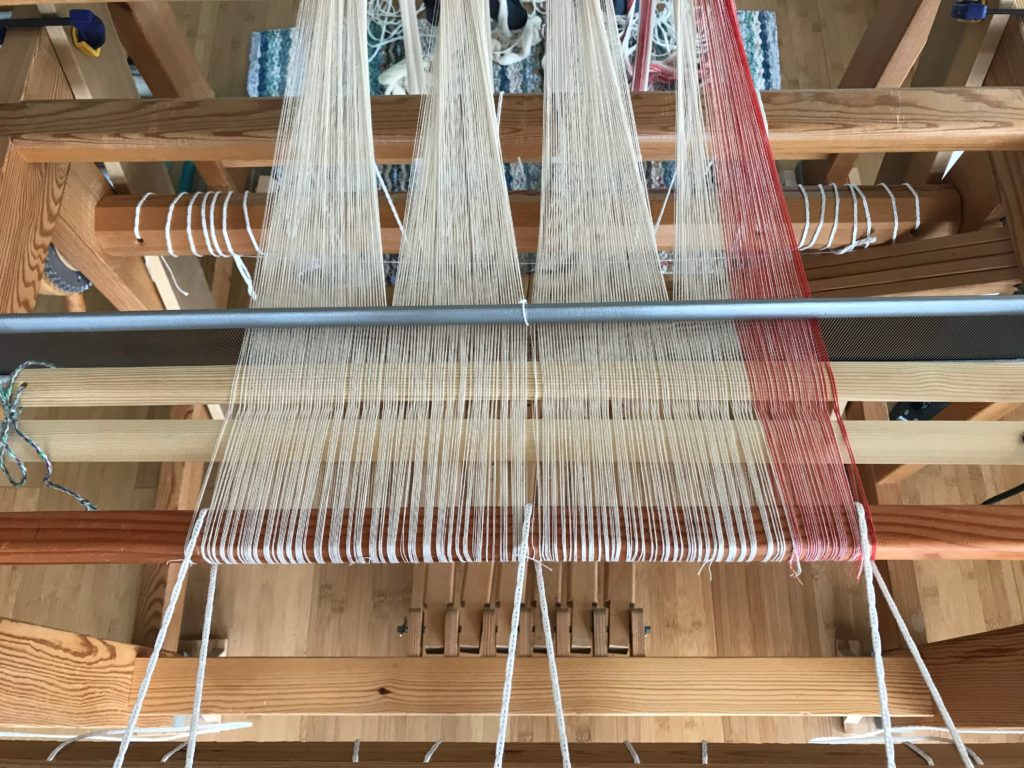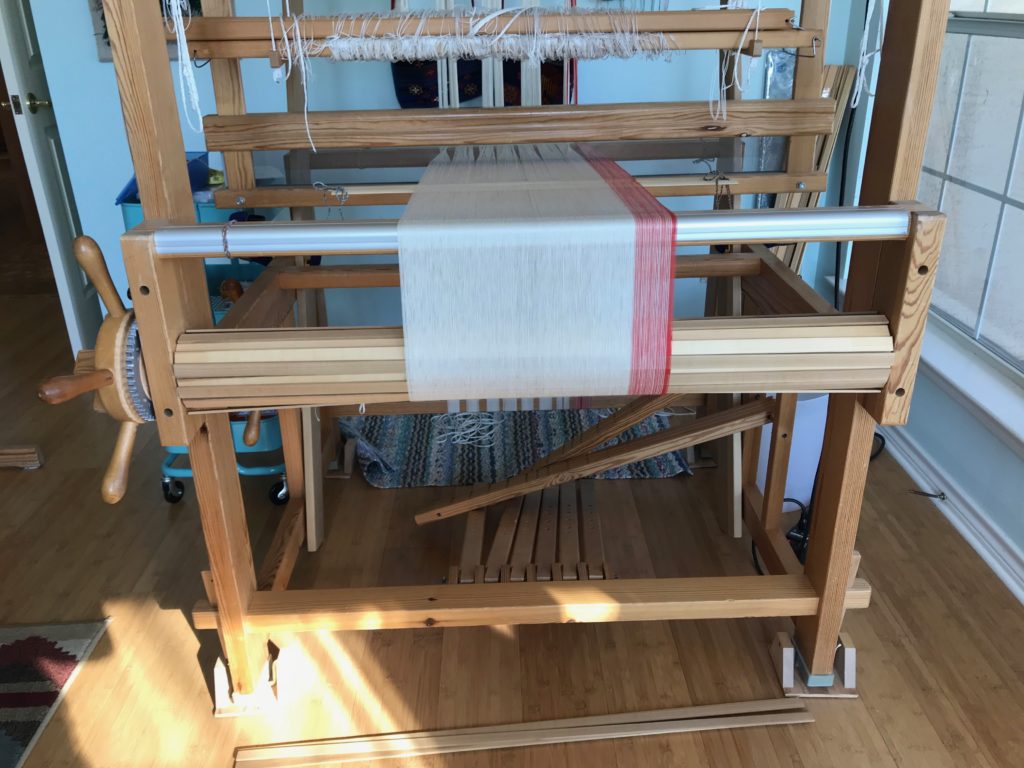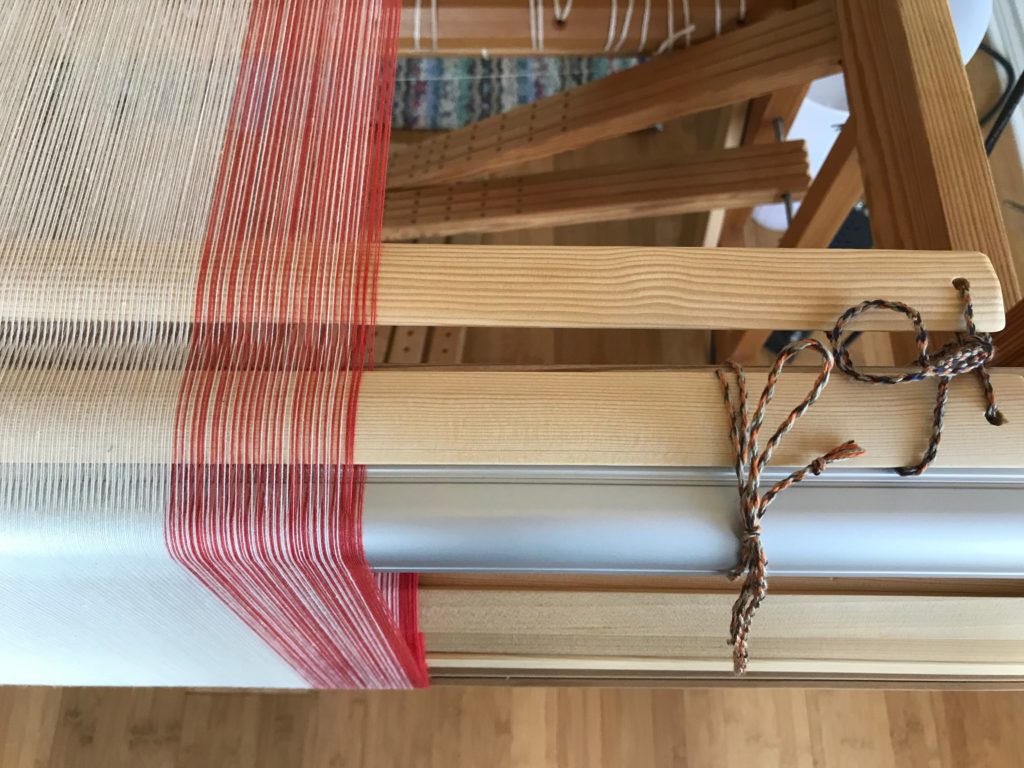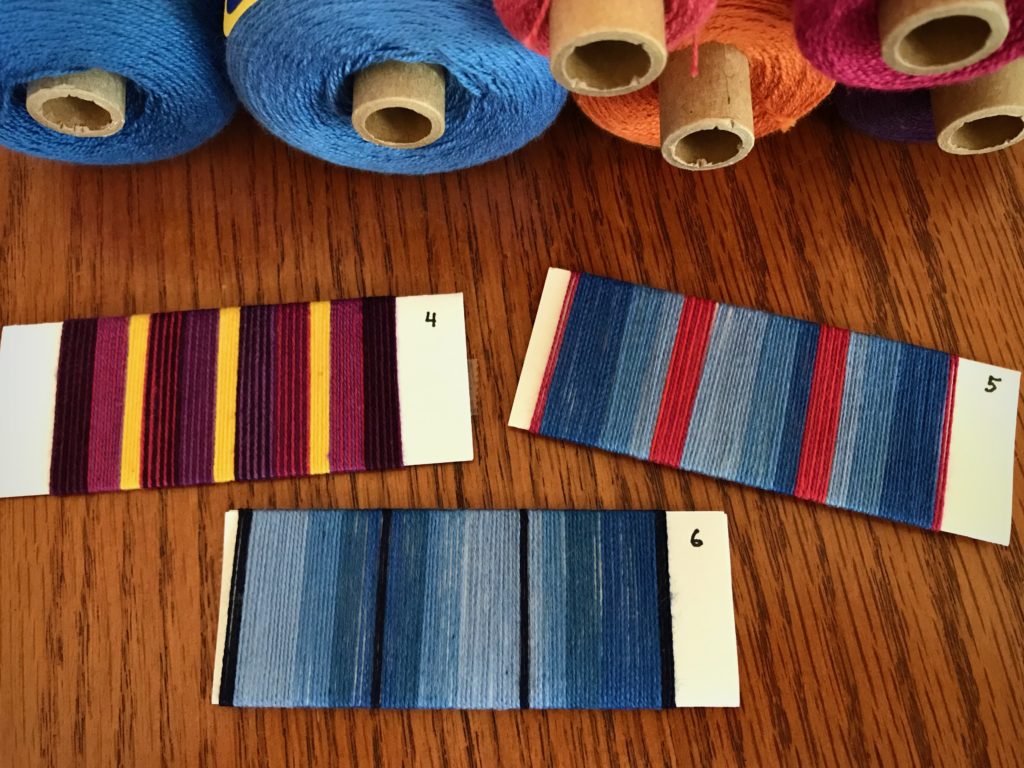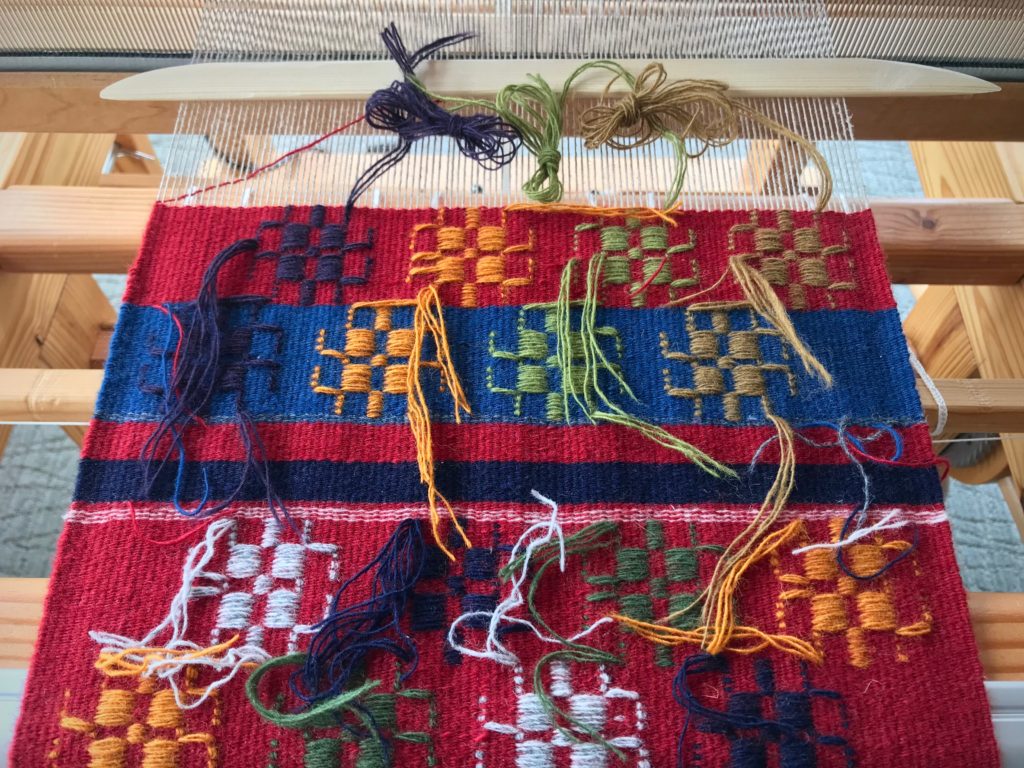I threaded 888 warp ends. I am getting ready to thread those 888 ends again. It’s part of the preliminary process for a new drawloom project. A drawloom has two sets of heddles. Thread the pattern heddles. Then, thread the ground heddles. I enjoy all the preliminaries because of what they bring about—a delightful new weaving adventure!


Before I start threading, I count out all the lingos (weights) I need for the pattern heddles. Then, I hang a lingo on each unit of pattern heddles. In this case, there are 148 units, and six heddles in each unit. I move all those prepared units (heddles with lingos) to the back of the loom, get comfortable on my loom bench, and start threading. After a few sessions, I am finished threading the pattern heddles.




Next up, I will thread long-eye heddles on six ground shafts. A few more start-up operations after that, and then we will see this big ol’ boat raise its sails and leave the shore for another exhilarating adventure in weaving!
May you enjoy the preliminaries for every new start.
Happy weaving,
Karen




